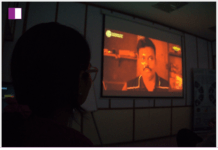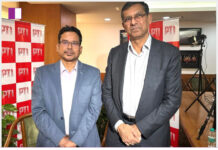As per experts, unless broadcasters explore new monetisation opportunities, the price increase will be passed on to advertisers. In such a scenario, brands will have to curb overall budgets on cricket and utilise other cost-effective genres to reach their media targets
Industry players have highlighted the potential challenges that broadcasters might face in light of the Board of Control for Cricket in India’s (BCCI) decision to establish a higher base price for digital rights in the upcoming bilateral 2023-2027 media rights cycle compared to TV rights.
While cricket remains a popular choice for advertisers due to its extensive viewership, industry players believe that the separation of TV and digital rights might not yet translate into higher revenues for broadcasters.
They also emphasised that an escalating price per match could impact broadcasters’ unit economics, prompting the need for innovative revenue models to offset increased costs.
BCCI has lowered the overall base price to Rs 45 crore per match compared to Rs 61 crore per match that Disney Star paid in the recently concluded cycle. In the history of cricket, digital rights’ base price has always remained lower than that of television rights.
According to the tender issued by the BCCI, Package A, encompassing the TV rights for the Indian subcontinent, has been assigned a base price of Rs 20 crore per match. Package B comes with global digital rights and television rights for the rest of the world, priced at a base rate of Rs 25 crore per match.

Shashank Srivastava, Senior Executive Director, Marketing and Sales, Maruti Suzuki, expect the media rights to be of the same value or slightly lesser than what it was unless the BCCI fixes a minimum threshold for the bidding to conclude.
Explaining the thought behind the same, he said, “The final media rights value obviously will be a function of the expected viewership plus competition among the broadcasters. Unfortunately, bilaterals do not enjoy the same kind of traction as IPL or marquee tournaments like World Cup, T20 World Cup, Asia Cup etc. Viewers nowadays are more interested in T20 matches as compared to ODIs and tests. This has a ripple effect on the advertisers who are more interested in T20s. Monetisation is hence much more difficult for ODIs/Tests,” Srivastava said.
“Also the broadcasters expected to bid are facing their own set of unique challenges. Both these factors are expected to negatively affect the media rights value at the moment. So we are expecting the rights to be of the same value or slightly lesser than what it was unless the BCCI fixes a minimum threshold for the bidding to conclude,” he added.

Meanwhile, Karan Taurani, SVP- Research Analyst (Media, Consumer Discretionary and Internet), Elara Capital, emphasised that given the current market dynamics, the revised media rights pricing is well-suited. As per him, it will be a win-win for the broadcasters, OTT platforms and the advertisers
He highlighted the positive aspect of the reduced base price in comparison to the previous cycle. This reduction is anticipated to facilitate better bidding and more pronounced premiums, which would not have been the case if the base price remained higher or on par with the previous cycle. He acknowledged this strategic move by BCCI as conducive to enhanced participation and ultimately yielding improved outcomes.
Srivastava believes that the escalating price per match is going to affect the unit economics of broadcasters. Now unless they can innovate and explore new monetisation opportunities, it is expected that the price increase is passed on to advertisers. In such a scenario, brands will have to curb overall budgets on cricket and utilise other cost-effective genres to reach their media targets.
“We are expecting the broadcasters to come up with new revenue models/innovation in monetisation opportunities to make up for the increased costs. With the advertising revenues set to increase at a CAGR of 12-14% in the next five years aided by modern-age startups, there is enough scope for the broadcasters to leverage the popularity of cricket,” Srivastava said.
“If the price increase per match is beyond 20-25% growth than that during the last bidding cycle, then it is assumed that broadcasters will not be able to make any money because, in such a scenario, adex revenue growth which is projected to grow at 12-14% CAGR, will not be able to match the escalation in base price. Further, unless the broadcaster is innovative in revenue monetisation, it is difficult to stay profitable in this bidding game,” he added.
Taurani then drew attention to the profitability demonstrated in the case of IPL. He pointed out that during the earlier cycle of IPL, where revenues were allocated at Rs 16,000 crores over five years (equivalent to about Rs 3,200 crores annually), broadcasting ad revenue reached approximately Rs 3,300 crores, complemented by around Rs 600 to Rs 700 crores from subscriptions.
From a broadcaster’s perspective, Taurani emphasised that achieving profitability relies on two critical factors: a prudent purchase value and a conducive advertising environment. If these conditions are met, broadcasters can potentially realise a profit margin ranging from 8% to 10% in this type of venture.
Srivastava pointed out that while BCCI’s strategy of fixing the base price for digital higher than TV bodes well for BCCI, for broadcasters, this is yet to translate into higher revenues, he added.
“As per reports, IPL revenues declined by around 15-20% this year as compared to last year, partly because of the division of rights. Advertisers are yet to bear the brunt of it because the broadcasters have not completely passed on the significant incremental prices to the customers/advertisers. Hence not much has changed for them, except probably a slight modification in the media mix of things,” Srivastava said.
Srivastava then commented that cricket continues to be one of the most attractive properties for the majority of advertisers owing to the scale and viewership it enjoys across age groups and segments.
“Brands will continue to find cricket as an attractive proposition and depending on the media consumption of their target group, plan budgets around TV and digital platforms,” he added.
As per a report from Elara Capital, BCCI has kept TV and digital rights of the bilateral series in two packages for 88 matches within the cycle (25 Tests, 27 ODI and 36 T20I).
“The combined base price stands at Rs 39.6 billion. The BCCI expects at least Rs 600 million per game at auction, which translates into a base price of Rs 52.8 billion via the e-auction process. It may cancel the process if the numbers are not breached. During CY18-23, the BCCI earned Rs 61.3 billion from Star India for 103 matches, with a price per international game at Rs 600 million (TV and digital). The base price for this cycle’s media rights is 25% lower per match than CY18-23. IPL auctions, on the other hand, during CY23-27 had a base price that was 47% per match higher than the earlier cycle,” the report stated.






































